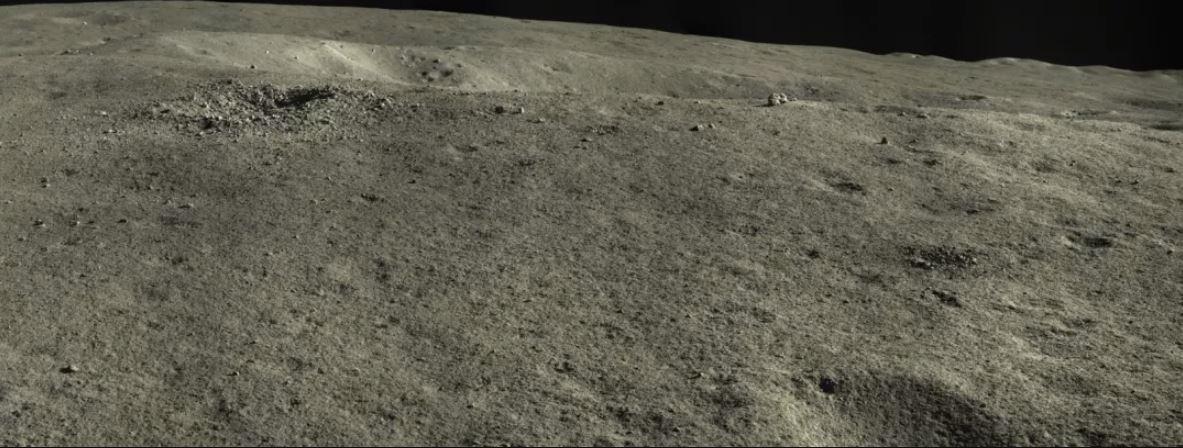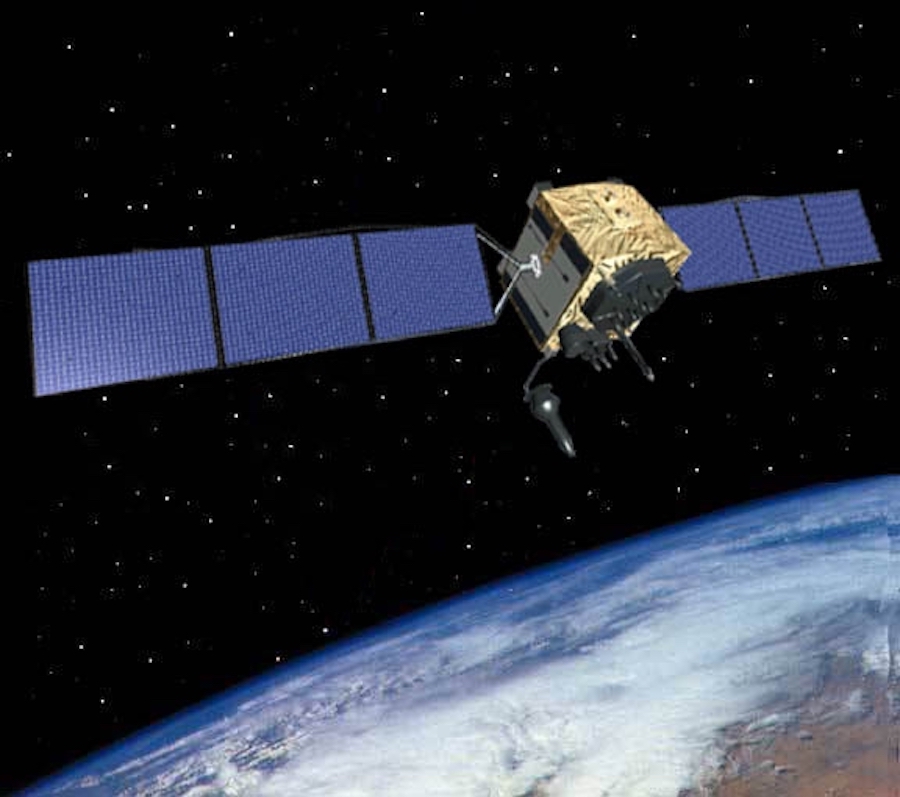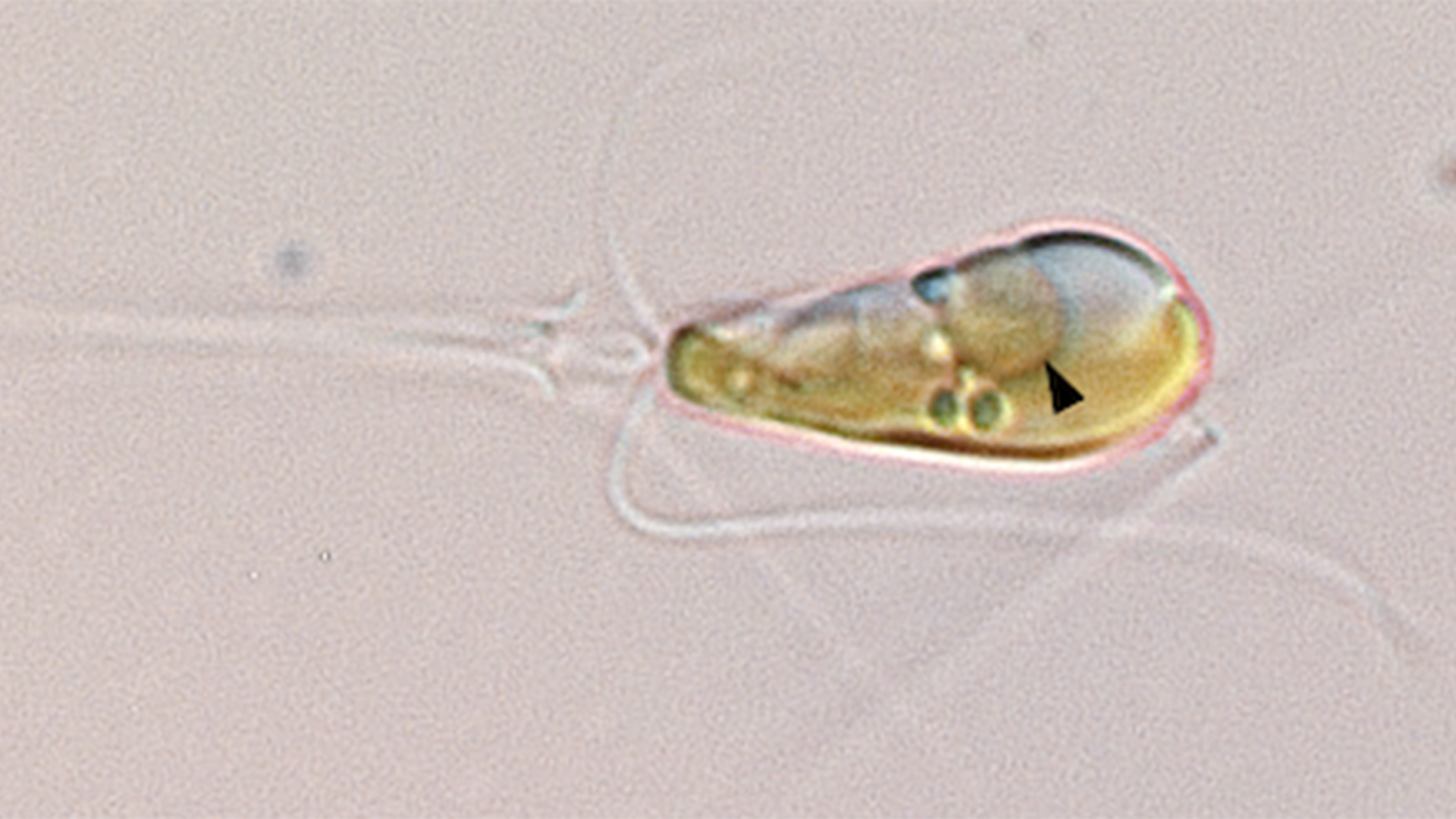Astronomers using the Atacama Large Millimeter/submillimeter Array (ALMA) have detected dimethyl ether (CH3OCH3), nitric oxide (NO) and methyl formate (CH3OCHO) in a planet-forming disk around the young star IRS 48. With nine atoms, dimethyl ether is the largest molecule identified in such a disk to date.
An artist’s impression of the planet-forming disk around IRS 48 star. The disk contains a cashew-nut-shaped region in its southern part, which traps mm-sized dust grains that can come together and grow into km-sized objects like comets, asteroids and potentially even planets; recent ALMA observations revealed several complex organic molecules in this region, including dimethyl ether, the largest molecule found in a planet-forming disk to date; the emission signaling the presence of this molecule (real observations shown in blue) is clearly stronger in the disk’s dust trap; a model of the molecule is also shown in this composite. Image credit: ESO / L. Calçada / ALMA / NAOJ / NRAO / A. Pohl / van der Marel et al. / Brunken et al.
IRS 48 is an A0-type star located approximately 445 light-years away in the constellation of Ophiuchus.
Otherwise known as Oph-IRS 48, IRAS 16245-2423, 2MASS J16273718-2430350, EPIC 203896277 or TIC 175743679, the star has been the subject of numerous studies because its protoplanetary disk contains an asymmetric, cashew-nut-shaped dust trap.
This region, which likely formed as a result of a newly born planet or small companion star located between the star and the dust trap, retains large numbers of mm-sized dust grains that can come together and grow into km-sized objects like comets, asteroids and potentially even planets.
Astronomers recently discovered that the dust trap in the IRS 48 disk is also an ice reservoir, harboring dust grains covered with this ice rich in complex molecules.
In the new study, they spotted signs of dimethyl ether — an organic molecule commonly seen in star-forming clouds — in this region.
As heating from IRS 48 sublimates the ice into gas, the trapped molecules inherited from the cold clouds are freed and become detectable.
“From these results, we can learn more about the origin of life on our planet and therefore get a better idea of the potential for life in other planetary systems,” said lead author Nashanty Brunken, a student at Leiden Observatory.
“It is very exciting to see how these findings fit into the bigger picture.”
Brunken and colleagues also made a tentative detection of methyl formate, a complex molecule similar to dimethyl ether that is also a building block for even larger organic molecules.
“It is really exciting to finally detect these larger molecules in disks. For a while we thought it might not be possible to observe them,” said co-author Dr. Alice Booth, an astronomer at Leiden Observatory.
“What makes this even more exciting is that we now know these larger complex molecules are available to feed forming planets in the disk,” Dr. Booth said.
“This was not known before as in most systems these molecules are hidden in the ice.”
The discovery of dimethyl ether suggests that many other complex molecules that are commonly detected in star-forming regions may also be lurking on icy structures in planet-forming disks.
These molecules are the precursors of prebiotic molecules such as amino acids and sugars, which are some of the basic building blocks of life.
By studying their formation and evolution, astronomers can therefore gain a better understanding of how prebiotic molecules end up on planets, including our own.
“We are incredibly pleased that we can now start to follow the entire journey of these complex molecules from the clouds that form stars, to planet-forming disks, and to comets,” said co-author Dr. Nienke van der Marel, an astronomer at Leiden Observatory.
“Hopefully with more observations we can get a step closer to understanding the origin of prebiotic molecules in our own Solar System.”
The team’s work appears in the journal Astronomy and Astrophysics.
_____
Nashanty G.C. Brunken et al. 2022. A major asymmetric ice trap in a planet-forming disk. III. First detection of dimethyl ether. A&A 659, A29; doi: 10.1051/0004-6361/202142981
Note: This article have been indexed to our site. We do not claim legitimacy, ownership or copyright of any of the content above. To see the article at original source Click Here














